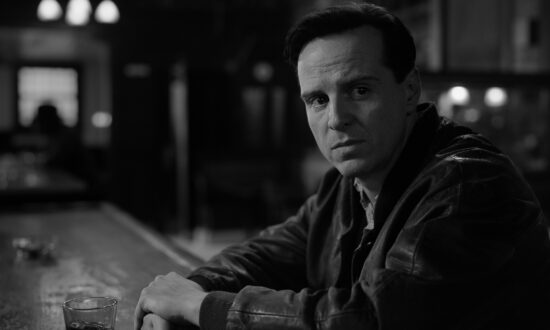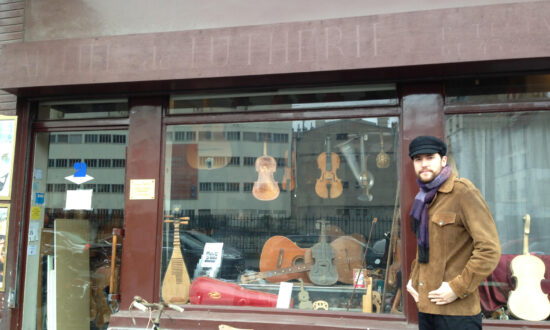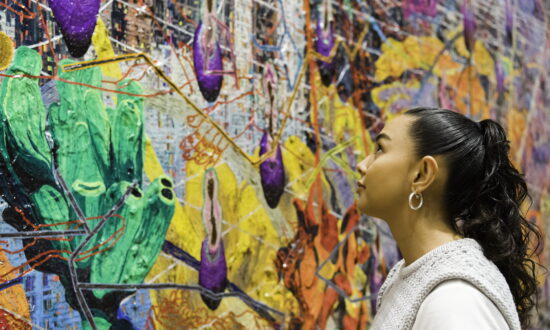One rubber rooster is never enough. Thank heavens there was a mathematician on hand to work out this challenging statistic.
A sleight-of-hand mathematician, as it happened.
’Twas the one and only Wayne Anthoney, for whom rubber roosters long ago supplanted abstract thought and deep physics as a tool of trade.
He had a perfectly good job as a government rocket scientist in South Australia when his career swerved into the world of nonsense, pratfalls, absurdism, and making children laugh. Beneath the facade of science and technology there had lurked an actor, desperate to get out.
Anthoney had enjoyed a modicum of success and quite some satisfaction picking up acting work on the side, even featuring in major 1970s movies such Sunday Too Far Away, in which he played the undertaker.
Then lure of the greasepaint overcame the prosaic life of nine-to-five and he chose performance over computers and science. Thus was born a tramp persona with a green face, a top hat, and a melancholy but canny disposition.
Wayne Anthoney became Humbolt, the clown, and Humbolt was to become a household name for South Australian children and their families.
Anthoney was 35 at the time, married to educator Meredith with two children, Christie, then six and Tom, four. Christie took her formative life on and off the road with a clown father and a dancer mother to achieve pinnacles of arts-elite heights with a career taking her to CEO of Festivals Adelaide. She now works as head of public affairs at the Adelaide Festival Centre.
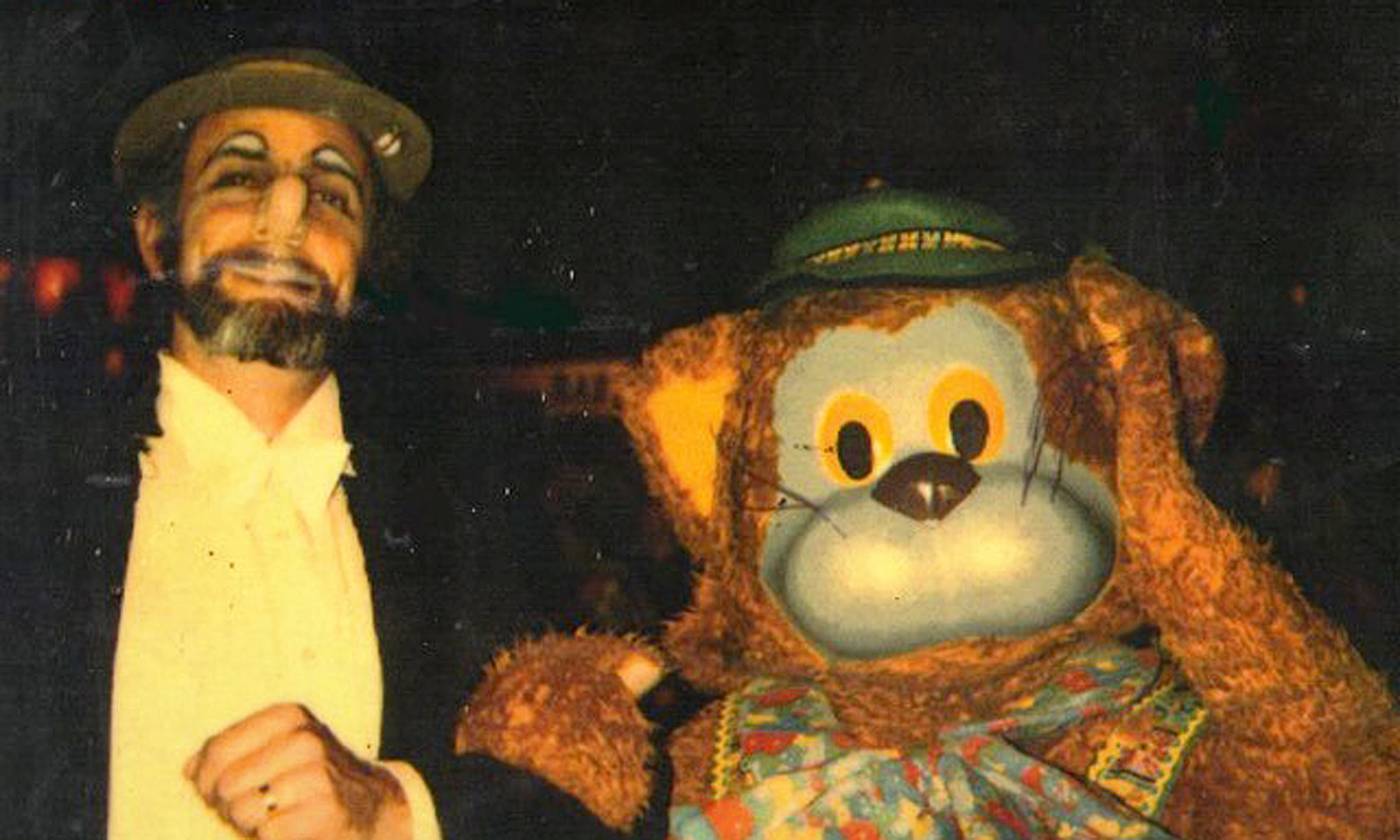
Humbolt and Fat Cat, circa 1984. Photo: supplied
Meredith Anthoney, known to many as Meredith Bowman, was to facilitate all of the above not only by supporting the evolution of Humbolt, the clown, but also by using her own work holidays to leap into the occasional breech, if need arose. Wayne tells of her bravely donning the hefty Fat Cat costume to dance their way through a season of touring shows.
What Wayne Anthoney cannot tell is exactly how he came upon the name of Humbolt for his clown character. In his recently published book, One Rubber Rooster is Never Enough, he makes clear his disdain for classic clown names ending in “o”, like Boppo or Burpo. Nor is he fond of cute names like Tangles or Dangles, nor names of body parts, mechanical parts like Sprocket or Wingnut, nor fruit nor food names.
Who knew a clown’s sobriquet could be such an impasse?
He pondered long.
But, at about three o’clock one morning he recalls sitting bolt upright in bed and shouting “Humbolt”.
Anthoney is still bemused as to whence came the name. It was just “right”. It just came. There were few antecedents, just an 18th– century German explorer and a naturalist, both “Humboldt”. He dropped the “d” and the rest is history, as vividly penned in his clown memoir.

Wayne Anthoney performing in Venezuela in 1987.
There is more to being a clown than people realise. Goofy slapstick is just an element. Clowning is serious business.
Anthoney studied the history and traditions of clown culture. Having decided to be a silent clown, he equipped himself with the skills of Commedia dell’arte and circus. He assembled a repertoire of magic tricks. He added music and, piece de resistance, the rubber chook.
He refined Humbolt’s persona: a rather lonely character, dignified but innocent, ever surprised and surprising, a humble fellow with magic to share.
Not only did Humbolt the clown get work entertaining at parties and schools and festivals, but he also became a TV star, shooting five shows a week on Sunday afternoons for national television. Fat Cat and Friends, featuring Patsy Biscio and directed by Murray George, starred a huge costumed ginger cat and was a commercial TV institution for more than a decade.
In early days, the scientist-turned-clown also appeared as the gawky science clown Arthur, who got everything wrong on the ABC Children’s science show The Investigators. And he became Professor Orlando and even a roving street performer, ever bent on raising a laugh.
In the same cause but for grown-ups, he did stand-up shows and was among those instrumental in getting comedy clubs established in Adelaide. He even taught acting at Adelaide College of the Arts.
Anthoney developed assorted dexterous crafts skills, of which paper craft turned out to be invaluable when work opportunities with his famous Magick Circus took him not only on the international clown and “Fools” festivals circuit but also to Alice Springs and the interior where, on various visits, he was able to teach as well as entertain. He performed conjuring tricks and magic all over: Amata, Pipalyatjara, Kaka, Wingellina, and elsewhere.
The First Nations world imprinted itself on Anthoney’s soul and he paused from performance to spend nine life-changing years as a project manager for the Nyangatjatjara Aboriginal Corporation.
As an actor, he remains on the talent list, scoring some rather juicy senior roles in films and on stage. He featured in film director Rolf de Heer’s Dr Plonk. Critics have commented that the older he gets, the better he gets. He’s an octogenarian, so he’s definitely beginning to peak.
Wayne Anthoney is a man of immense loyalty and lifelong friendships. To this day, he consorts and buffoons with his old Adelaide University peers, most particularly those who were involved in the Footlights’ University Revues.
The art of the satirical student revue has perished with modern education and mores, but Wayne – along with arts entrepreneur Bob Lott, Keith Conlon, and a shrinking cohort of old funny bunnies – sustained the Footlighters’ traditions with productions at Holden Street Theatres through Fringe festivals up until recently.
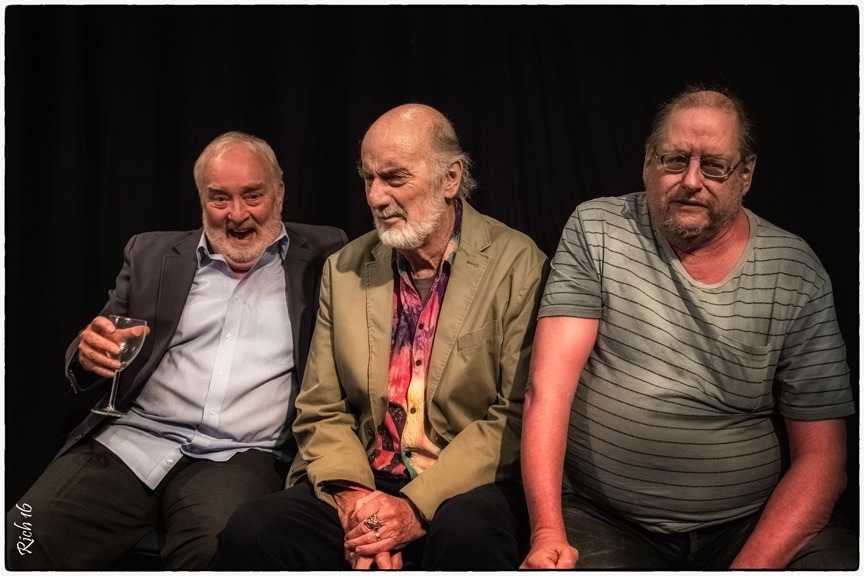
Adrian Barnes, Wayne Anthoney and Brian Godfrey in Don Parties On in 2016 at Holden Street Theatres. Photo: supplied
Many of those old Footlighters continue to lunch monthly as the august Hogarth Gentlemen’s Dining Society, usually liaised by stalwart Wayne. And all of them have the pleasure of Wayne and friend Peter Colling’s monthly Just for Laughs e-newsletter. It is an exuberance of old-school silliness.
More seriously, he goes out and about to the regions as an Australia Day Ambassador and continues to write plays. His clown Shakespeare play Juliet and Romeo was such a big hit in Samiland (yes, in the arctic wilds) that the Sami company paid to bring him back to produce his Clown Macbeth and stay for its premiere. Not that he could understand either Norwegian or Sami. But his humour hit a nerve with them.
One Rubber Rooster is Anthoney’s second memoir. Travels in a Foreign Land recalls his more than 30 years with the Aboriginal people of Central Australia.
Meanwhile, in the big smoke the unstoppable Wayne Anthoney has become the poster boy for elder abuse, of all things. Huge illuminated portraits of him adorn shopping malls throughout the city. He’s not an abused elder, of course. He is an actor for whom seniority has opened a new door – modelling.
He is also a senior who has earned massive love and respect from a very broad-ranging community for a richly versatile and generous-spirited career. Hence an OAM for services broad and beautiful.
One Rubber Rooster is Never Enough – Doing Prat-falls the Hard Way, is published by Wayne Anthoney and available at Imprints and through Amazon on Kindle. Below is an edited extract from the book.
*****
How Roger the Rooster became famous in Costa Rica
By Wayne Anthoney
In 1986 I travelled to Costa Rica to participate in The First World’s Clown Festival for Peace.
On arrival I was treated like royalty and then shown my performance schedule.
I had been asked to give my first performance in a Costa Rican jail. It’s ok, someone said, we have two jails and this one is for the non-violent criminals. The drug dealers and pickpockets etcetera. I said ok, sure, I’ll do it.
There were three acts on the bill. The first was a Malaysian guy of indeterminate sexuality who performed alternately the male and female parts of about 15 traditional Malaysian dances.
The second was a couple of Eskimos, whose performance was to put on traditional costume and then apply their make-up, which in olden times, they explained, would have been black ash and red blood, with lines wiped out to make white. Once it was done they ran through the crowd, pretending to scare the children. They said this ritual performance was about 5000 years old.
Then it was my turn, with my clown magic show, in which Roger the Rubber Rooster was an important part.
We were driven to the jail in a van, processed through security and led to a breezy outdoor compound without walls, just a tin roof and one electric light. The inmates were brought in, looking excited and cheerful. The Malaysian guy’s act mystified them somewhat, the Eskimos they found interesting, but I have to say, I was the big hit.
After a few of my standard tricks I produced Roger the Rubber Rooster seemingly out of nowhere and announced that after hypnotising him I would make him fly. All this was interpreted by a new clown friend named Alejandro, wearing a funny hat. I whirled Roger around, building up speed and then launched him upwards. To the amazement of all including me, he didn’t come down. I looked up. There was a sheet of corrugated iron missing from the roof directly above my head and Roger had shot through it. The crims started cheering, clapping and laughing, many saying that he was trying to escape. I couldn’t go wrong from then on. After the show one of the guards climbed up on the rickety roof, arrested Roger and returned him to me.
We were then conducted into the dining area to share dinner with the inmates, after which a jail choir sang some Costa Rican folk songs for us, beautifully harmonised, in what was a very emotional experience.
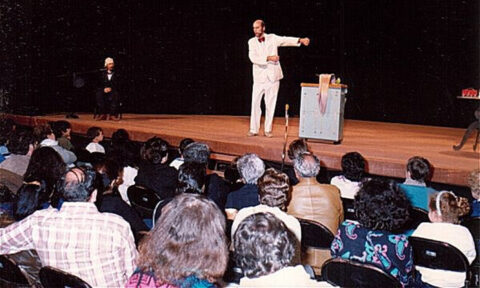
Wayne Anthoney, in his $15 suit from Trim’s, during his 1986 trip to Costa Rica. Photo: supplied
I was starting to realise that Costa Rica is a very beautiful and interesting little country. I soon learnt that the military was abolished in 1948 and there still isn’t one, meaning that the vast amount of money usually spent on armaments and soldiers could be used much more productively, on education, social services, pensions and the like. Costa Rica was then and still is one of the best run and most peaceful countries on earth. That is why they had wanted to have the clown festival there. Clowns for peace. Yeeeaaaahh!
Reluctantly we left the jail to get to El Teatro back in the centre of San Jose for the next show. This was a lovely theatre with a good stage, lighting and facilities, and, similar to the space at the jail, it had no walls. The weather in San Jose is very pleasant for most of the year, so this does not apparently matter.
People were apparently saying, ‘This Australian is mad! How can he do this?’ ‘El Austaliano es loco!’
I should say that for my magic show I was dressed not as a clown but in my elegant cream tuxedo suit complete with bow tie that I had bought at Trim’s in Adelaide, for $15. There was a big and enthusiastic audience and I was quite nervous, which is good. Sometimes. I got into my act, with the ropes and rings, flowers, multiplying bottles and Alejandro sitting on the side of the stage, interpreting. Finally it was time to produce Roger, which I did with aplomb. It was time to let him fly. I whizzed him round and flung him upwards. Normally when I did this Roger would soon land on the ground with a thump, but once again, as he had done at the jail, he did not come down. I was amazed! The crowd was amazed! They started whispering and giggling. I looked up. Roger had landed on a wooden beam no more than six inches wide, that ran above the stage. I could NOT believe this. My reputation was made! People were apparently saying, “This Australian is mad! How can he do this?” “El Austaliano es loco!”
After the show people flocked to me, wanting to know how I had done this amazing trick. I said, modestly and gravely, well you know, I am a magician. I am pledged not to reveal my secrets.
My diary records that I performed the next night at Denmark. I think this must have been the Danish Consulate.
I was then asked whether I would be prepared to perform in some refugee camps in various parts of the country. These were refugees who had crossed the border from Nicaragua, to escape the vicious civil war being funded by the Americans. I agreed, as did the group of Venezuelans, after being assured that it was quite safe.
We visited two camps, the first being in the northern province of Tilaran, not far from the Nicaraguan border. To get there we went on a two-hour ride through farm land and dense jungle. I briefly caught a glimpse of a sloth from the bus window but it was too dark for a photo. I recall that I was feeling bit tense but not much else, except a bit of a twinge when I saw that one of the refugees was fondling a large snake. Python, I think. Non-venomous. The second camp was somewhere close by. I think the shows went well.
On the Saturday night I participated in a cabaret show in a pub somewhere. This is where Roger the Rooster really went down in history. During my act I demonstrated how I hypnotised him, by banging his head sharply on the wall. I released my hand and Roger just hung there, stuck to the wall. How had I done this? I didn’t know and the audience, many of whom had been in the theatre on the night he didn’t come down from the beam, now really thought I had supernatural powers. Anyway, it turned out that there was a nail protruding from the wall exactly where Roger’s head had encountered it.

Get InReview in your inbox – free each Saturday. Local arts and culture – covered.
Thanks for signing up to the InReview newsletter.
After this I donated Roger to Alejandro, knowing that I could easily get another at home. After all, one rubber rooster is never enough. They renamed him Rohelio (Spanish for Roger) and promised to treat him with love and affection, for he was very famous in Costa Rica.
Support local arts journalism
Your support will help us continue the important work of InReview in publishing free professional journalism that celebrates, interrogates and amplifies arts and culture in South Australia.
Donate Here

